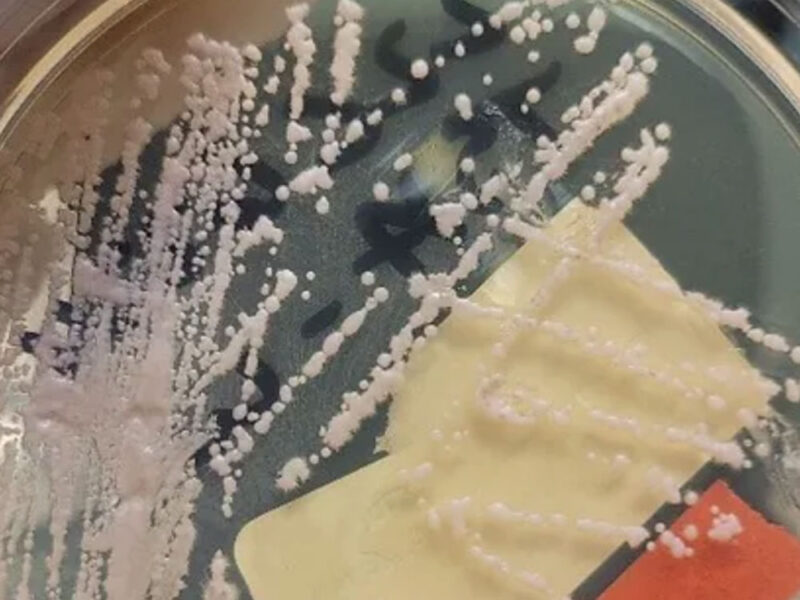
Both Fungi and Bacteria have organisms that do not fit the typical morphology typing that they are commonly associated with. One interesting example is the organism Aureobasidium pullulans. The morphological variations of this mold are so diverse that the shape of the mycelium is entirely dependent on the strain and variant. This organism has been seen with yeast-like morphological properties, as well as entirely filamentous characteristics with developed mycelia. There are many factors that affect Aureobasidium such as media, colony age, incubation temperature, and light cycle.
The image on the above shows a fresh growth Aureobasidium where the organism has yeast-like morphological characteristics with creamy, white isolated colony types. However, if you look at the image on the bottom left, this is also another Aureobasidium pullulans. It is a more mature sample where the organism is expressing morphological characteristics typical of filamentous fungi.
Understandably, there are many instances where Biolog Lab Services customers may mistake the first image for either yeast or bacteria. Becoming familiar with your sample is critical when dealing with organisms like this to ensure that they are not incorrectly submitted under the wrong service!
On the other end of the spectrum, an organism that is commonly submitted wrong as a fungus is the organism Actinomyces. Members of the genus Actinomyces have a filamentous structure that can be easily mistaken for the mycelium of fungi. This dense, filamentous network is referred to as thread or ray bacteria. This organism is ubiquitous in nature and is what typically gives the soil that distinct “earthy” smell. The colony morphology of Actinomyces is commonly misinterpreted as those of other filamentous fungi. Biolog Lab Services can identify various members of the class Actinomycetia. Our recommended testing method is DNA sequencing due to the rigorous colony surface that can inhibit the identification capabilities of MALDI-TOF. Biolog Lab Services is currently working to enhance our MALDI-TOF testing capabilities to better accommodate members of this class.


